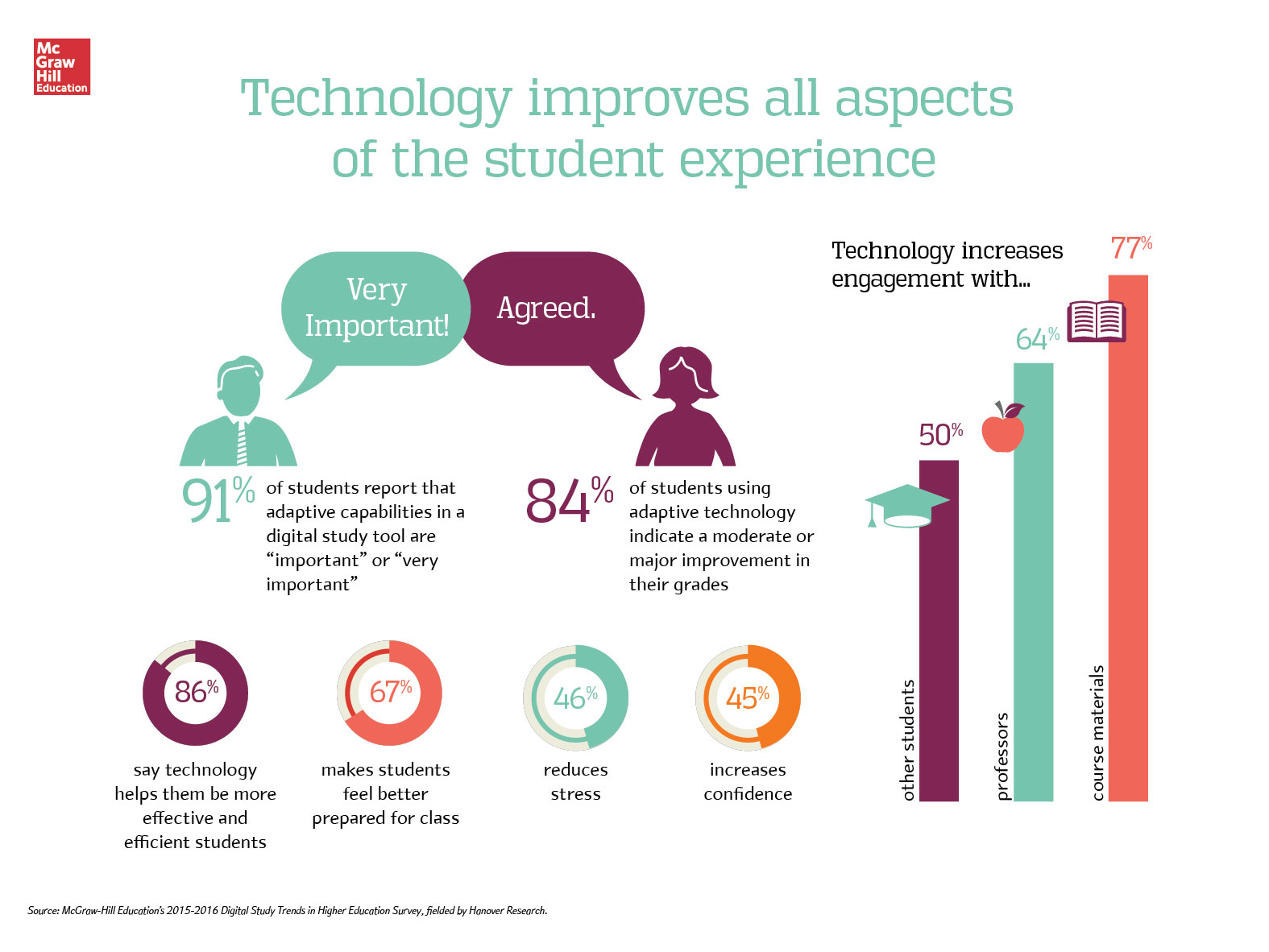Today’s college students aren’t necessarily who you might think they are. Much like the rest of us, their relationship with technology has changed radically in just a few short years, and those shifts have had a massive impact on how they study, learn and even think. That in turn means that educators - and, ultimately, anyone hoping t o have a meaningful interaction with today’s college-age adults - must fundamentally rethink how they engage with them.
To learn more about these changing patterns of behavior, McGraw-Hill conducts an annual survey of college students, focusing primarily on habits and preferences for studying and educational technology. What we recently discovered offers a particularly enlightening peek into the minds of college students. The findings parallel some of the tendencies and preferences we’ve already come to closely associate with millennials (and their younger counterparts), but they also reframe what we know in an entirely new context.
Students want immediate feedback
Our data suggests that the vast majority (87 percent) of college students report that having access to data analytics about their academic performance can have a positive effect on their learning experience. What’s more, almost two-thirds of students who already use such analytics report that their impact on their academic performance is “very positive” or “extremely positive.”
This desire for feedback should not be confused with the very valid teaching approach where we challenge our students to work in areas of ambiguity and to stretch to build confidence. We interpret this desire for feedback to mean that today’s students are not willing to wait until mid-terms and finals to understand their standing in their coursework. We believe that today’s students will engage when supported with guideposts that shape and focus their efforts in a world where the pressure of time is immense.
In other domains, I’ve experienced this phenomenon. When one of my children posts a photo to Instagram and I haven’t “liked” it within an hour, I get a text asking what’s wrong. And if the image looks like the final product of a painstaking photo-editing process, I know that it’s really just the beginning of an equally careful “like” monitoring process. Too few “likes” within a certain (short) period of time and they’ll delete the post, vowing not to make the same mistake next time.
Thankfully, most instructors already strive to deliver meaningful feedback to their students as frequently as possible, though they are often limited simply by the number of hours in a day and number of students they are managing. Learning technology has helped to support faculty and students through automation of grading activities but has frequently fallen short with very rudimentary approaches that can inadvertently diminish the faculty, student relationship and reduce student engagement. Ideally, students and instructors would be supported by technology capable of delivering highly sophisticated feedback, including the kind of actionable insights that can inform and even begin to emulate real student-instructor interactions and that keep the student on the road to success by preventing boredom and frustration and creating a truly personalized learning path.
The next step: personalized learning experiences built on AI-driven feedback
Fortunately, we know how to provide rich learning experiences that support today’s students without putting unrealistic burdens on our faculty - most notably, through the use of educational technology that harness the science of learning to personalize the learning experience.
This technology, which provides students with real-time learning feedback and guidance by continually assessing their knowledge state in a given course, assessing their mastery of key concepts and by understanding confidence levels, exists and has been shown to improve grades, retention rates and overall student success. As these personalized environments learn more about a student, they can highlight passages of text that a particular student needs to focus on, zeroing in on the content that he or she has yet to master and retain. They can serve up digital content that is most important to the individual student and these technologies can help less experienced learners understand how to manage their time as they engage in their out-of-class studies.
Given how effective we’ve seen personalized tools to be, it’s extremely encouraging to see that students themselves have also noticed. According to our most recent study, 91 percent of all students feel that it’s “important” or “very important” for their study tools to adapt to their needs. Students also reported that adaptive learning technologies are the most effective form of study technology, with 84 percent indicating a moderate or major improvement in grades.
What’s troubling, then, are other recent findings that highlight just how rare personalized learning still is in our classrooms. According to the 2015 Campus Computing Project, just four percent of general and developmental education courses use adaptive learning technologies. That might help explain why four out of five of the students that we surveyed reported that there are still additional ways that their university or teaching staff could improve the way they use technology in order to ultimately improve their education.
Given all of these findings, it’s clear that we have an opportunity to help instructors in their effort to make the learning experience more engaging and effective.
Students today have an insatiable hunger for frequent feedback. Instructors are actively seeking new ways to excite and engage their students. By using technology that aligns with and leverages students’ natural motivations, we can deliver significantly more meaningful learning experiences, and greatly improve learning outcomes.
It’s incredibly gratifying to know that modern learning technologies, and particularly adaptive, align so perfectly with college students’ own motivations, but we need to be more proactive about providing them to every student. We have all of the pieces - it’s time we put them together.
This article originally appeared in Huffington Post on April 12, 2016 and can be viewed here.
